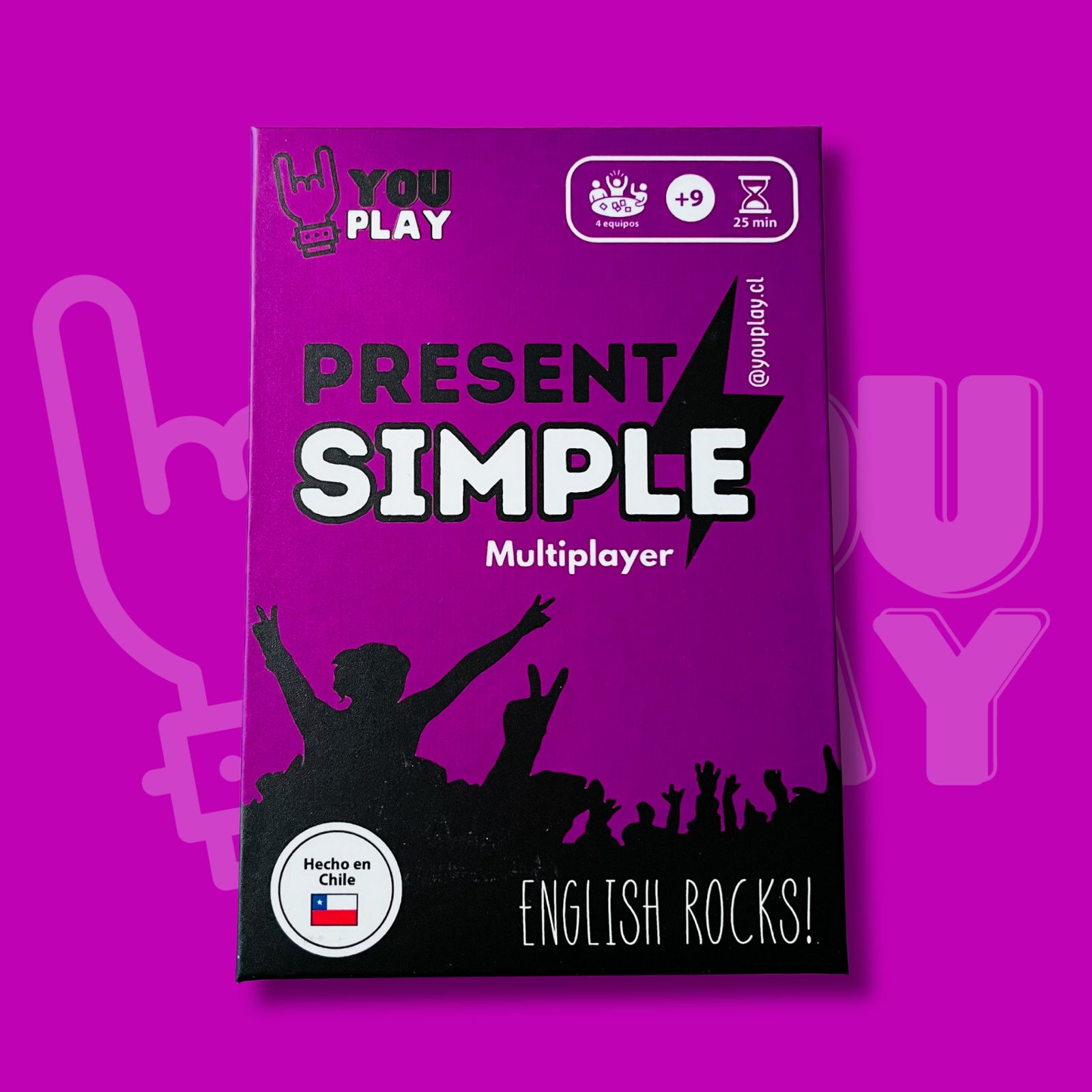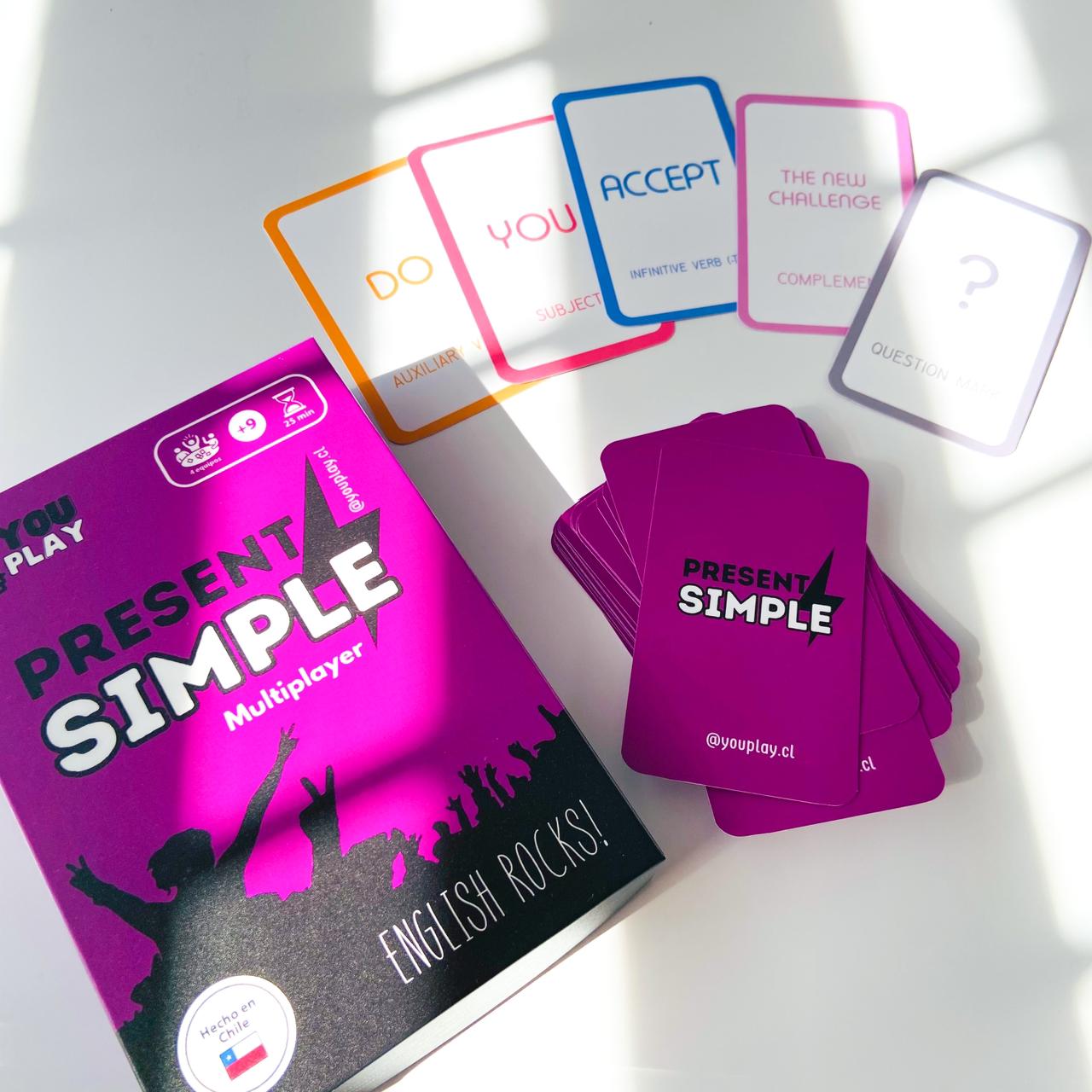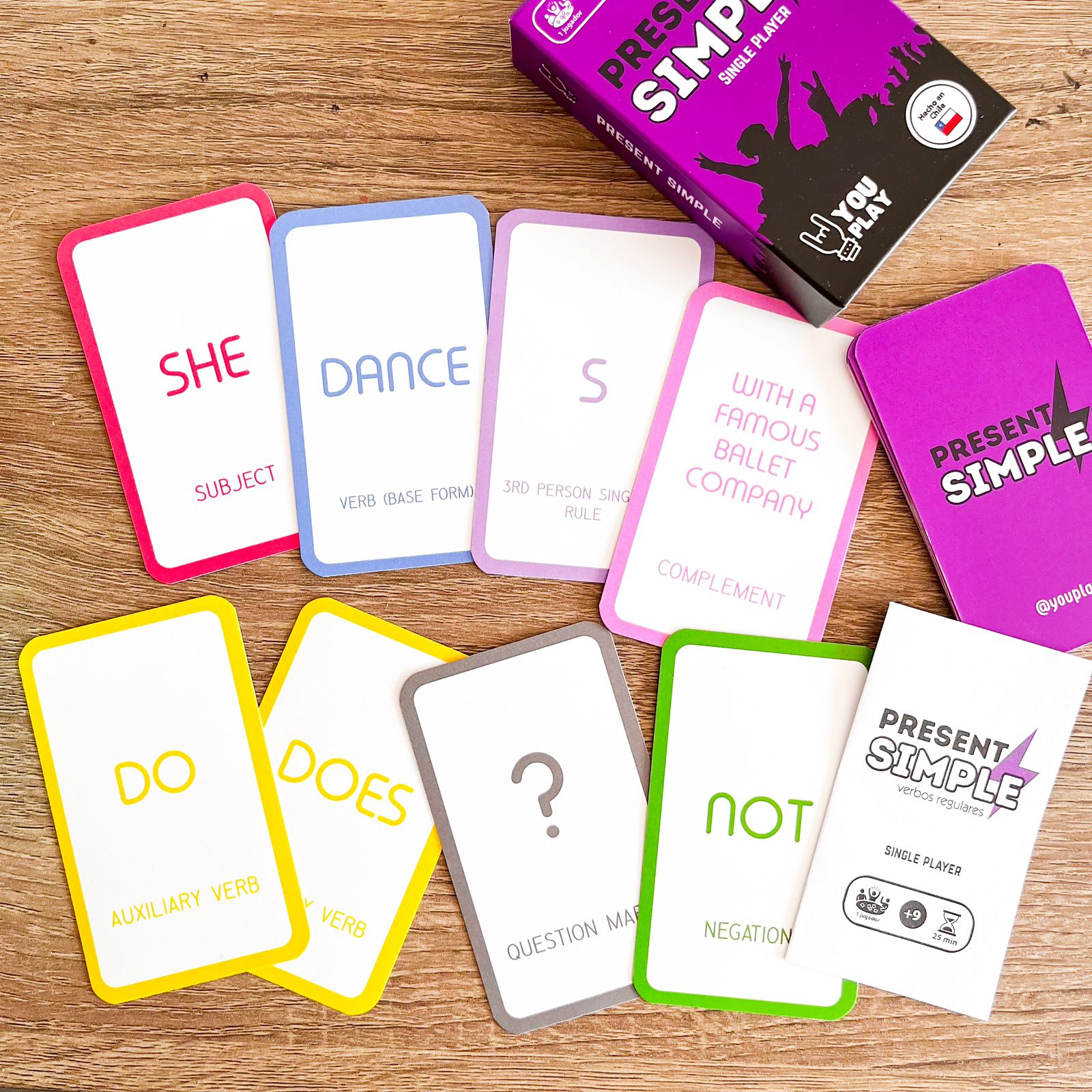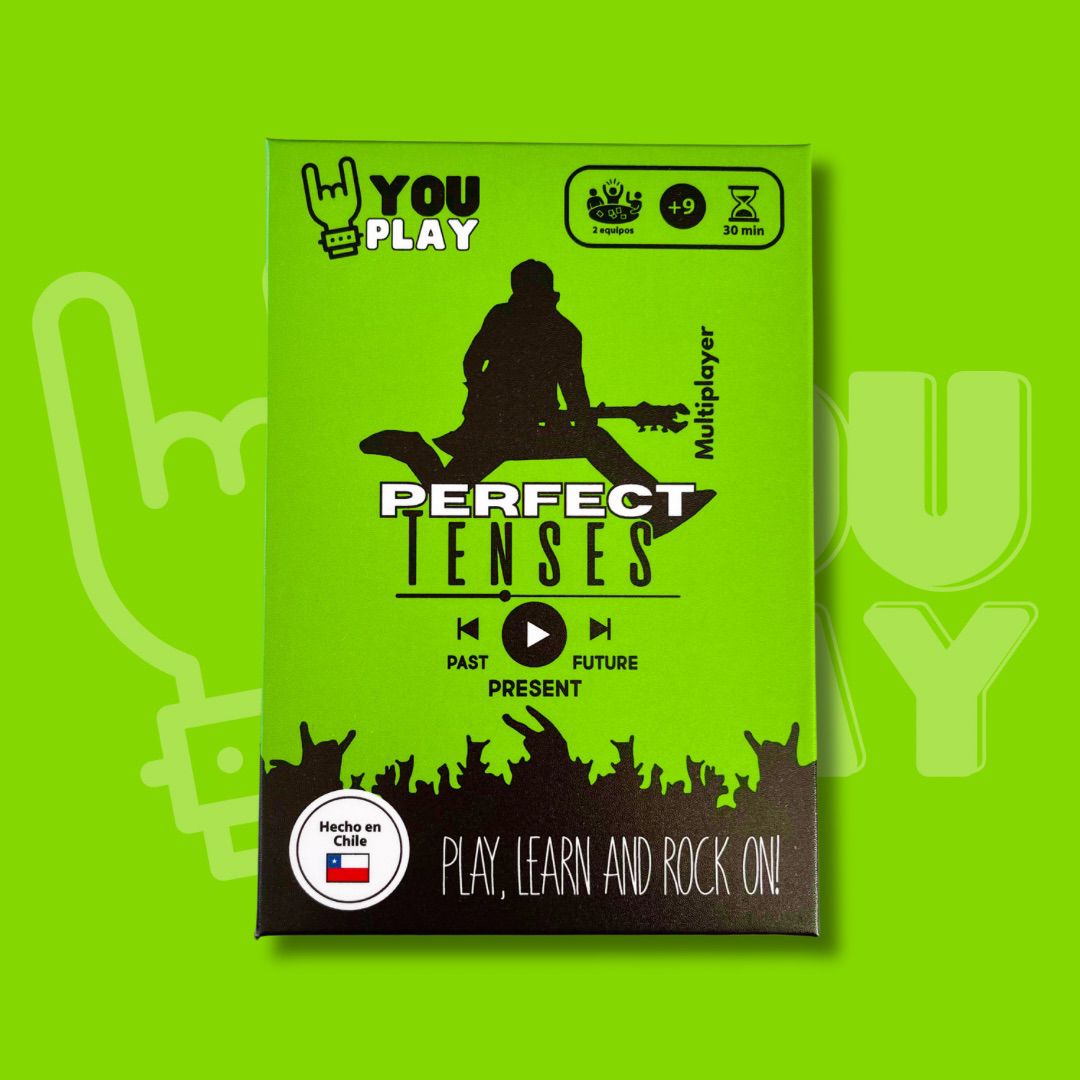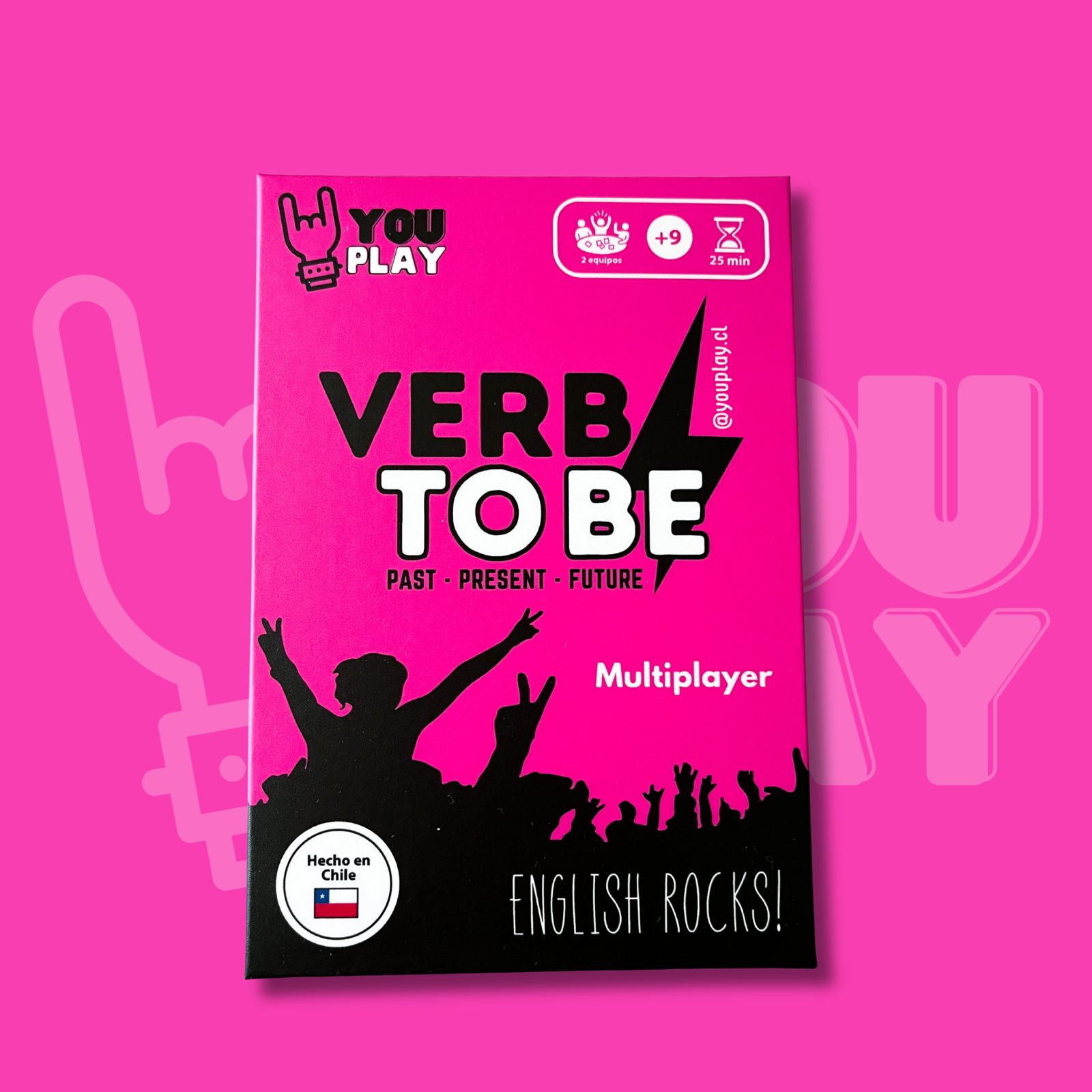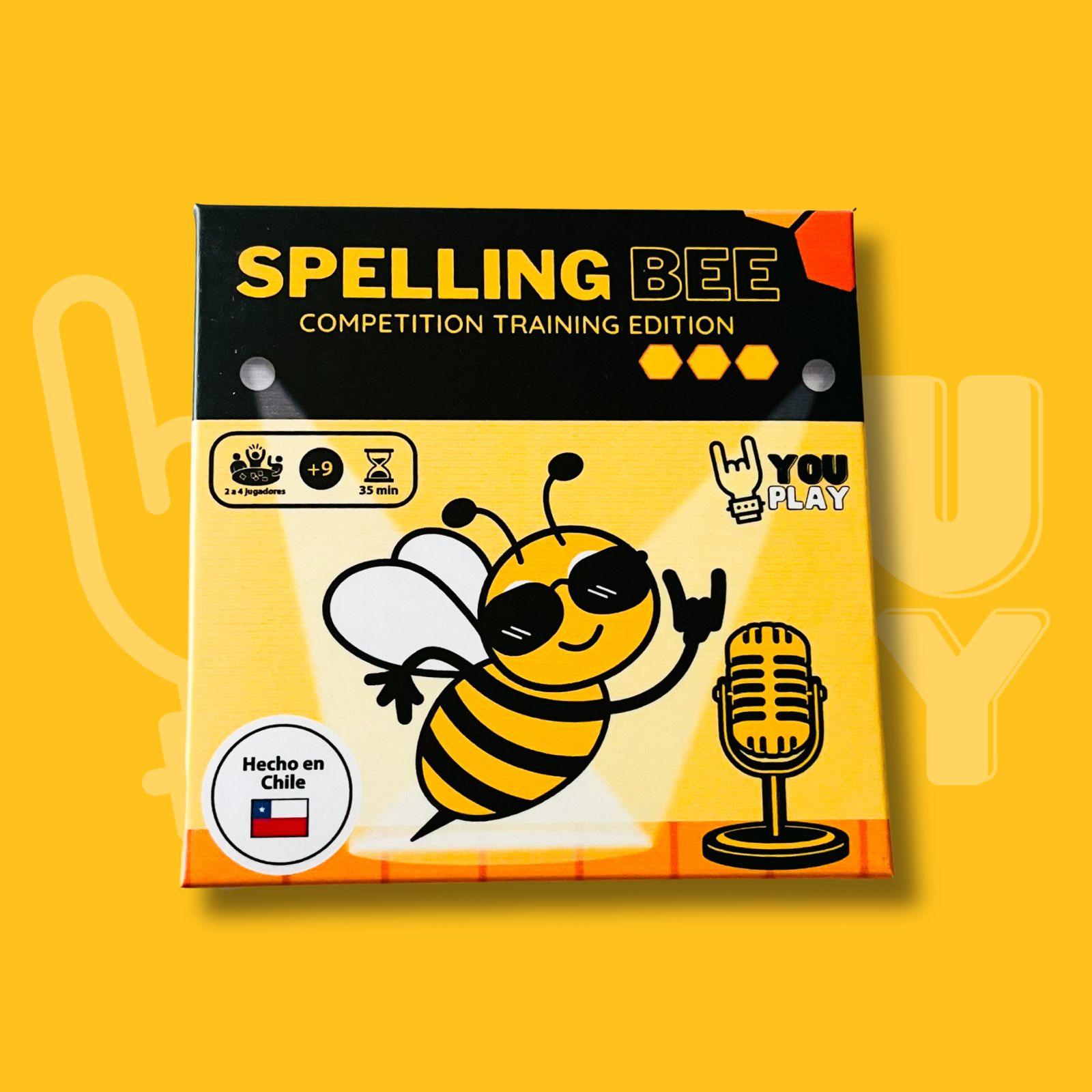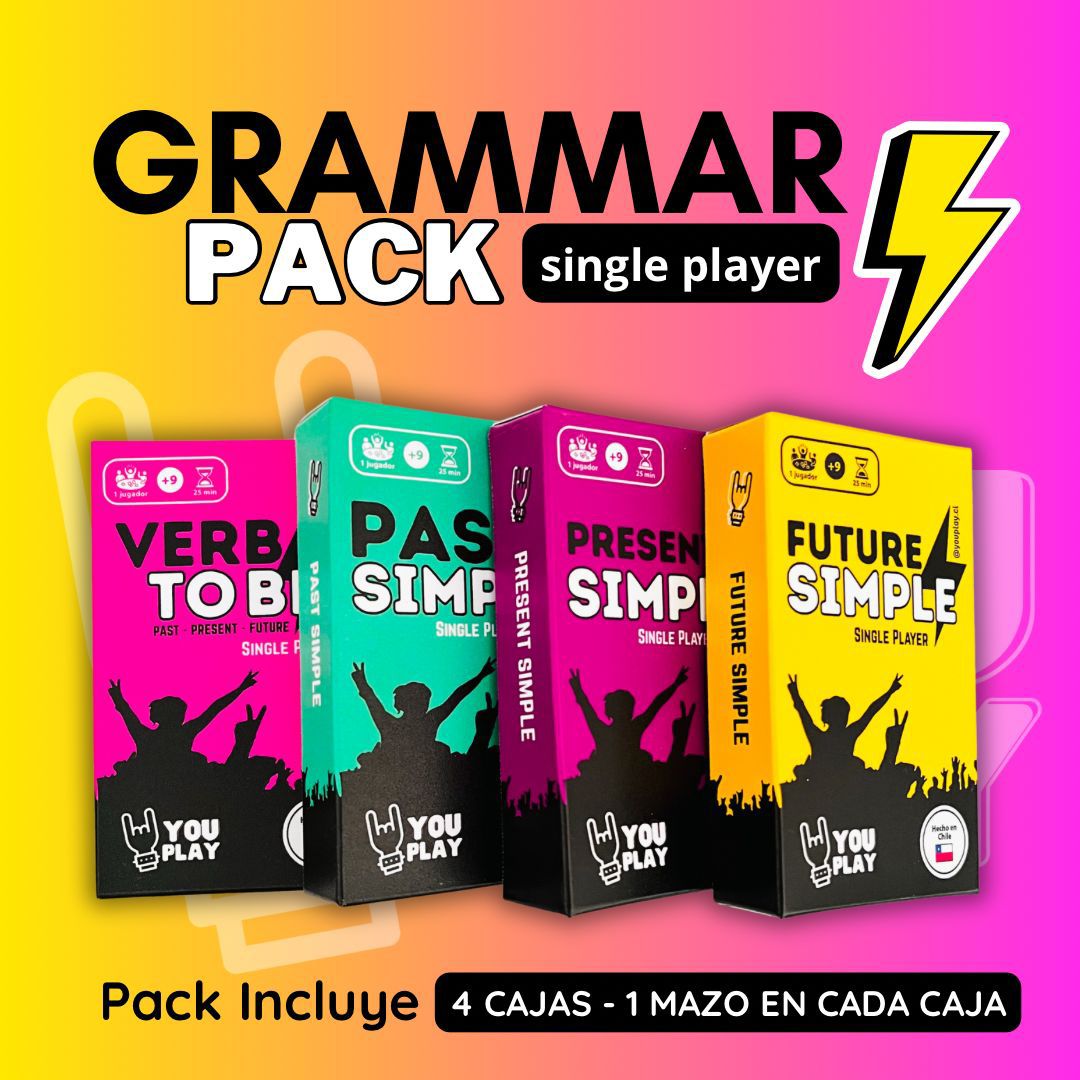JUEGO PARA APRENDER INGLÉS – PRESENT SIMPLE
Nuestro Juego de Cartas – Present Simple, motiva y potencia a tus estudiantes a aprender de una manera simple y entretenida a través del juego!
- El objetivo de este juego es para trabajar y reforzar la gramática del #presentesimpletense .
- Este juego para aprender Inglés es super SIMPLE , con estructura basada en pronombres, verbos regulares, complementos, negación, auxiliares, signo de interrogación y variaciones de la 3era persona
- Crea Afirmaciones, negaciones y preguntas.
- Juega y compite en equipos, se el primero en formar oraciones y se el vencedor !
- Promueve aprendizaje colaborativo , razonamiento , atención y trabajo en equipo!
Como Jugar con el Juego de Cartas – Present Simple?
- Primero se agruparán las cartas por sus funciones (o por colores) todos los pronombres, todos los verbos, todos los complementos y así sucesivamente.
- Luego y una vez dispuestas las cartas sobre la mesa , el profesor o adulto responsable te dará la indicación de crear una oración, por ej ; “interrogative sentence” . Deberás crear una oración con la estructura correspondiente y que ésta tenga sentido.
- Finalmente quién logre crear primero las oraciones indicadas resultará ganador !
- Recuerda las reglas y estructura para formar cada tipo de oración , la encontrarás disponible en el instructivo. Incluye 34 cartas por mazo.
What do we mean by Present Simple?
All languages use verbs to express actions of one or more subjects. Whether singular or plural, they typically accompany a verb conjugated in the past, present, or future. That’s why if you want to enhance your professional or personal skills through learning English, you need to understand how the elements that make up sentences are used and their grammatical rules.
One of them is Present Simple.
- The Present Simple is used to indicate habits and routines, permanent emotions, general facts, and actions or situations that repeat. It is also used to negate or ask about them.
- Additionally, it is useful for indicating scheduled activities.
Due to its importance in the language, Present Simple is one of the first structures we should learn to effectively learn the English language.
Affirmative sentences, do you know the rule of the 3rd person?
Super simple, always remember that the 3rd person is “special,” so to speak. Therefore, in affirmative sentences, for the 3rd person singular (SHE – HE – IT), we add an S at the end of the verb. You have to consider that it’s not just an S; it depends on the verb and its ending whether we add an S, ES, or IES.
- Work – He works
- Kiss – She kisses
- Cry – She cries
And very importantly, always remember that this extra S is only added in the AFFIRMATIVE.
What about interrogative and negative sentences?
To form questions we must use an auxiliary that “helps” us to ask something. This auxiliary also “helps” us to deny something.
We have only two auxiliaries for these purposes: DO or DOES.
Let’s start with DOES.
This auxiliary is used only with the 3rd person singular.
And to keep it simple, DO will be used with I – YOU – WE AND THEY
Examples of questions and negatives:
- Do you like chips? / You do not like chips.
- Does he like chips? / He does not like chips.
CONTRACTIONS
- Do not = don’t
- Does not = doesn’t
PRESENTE SIMPLE
A que nos referimos con Present Simple?
Todos los idiomas utilizan verbos para expresar las acciones de uno o varios sujetos. Ya sean los singulares o los plurales, habitualmente vienen acompañados por un verbo conjugado en pasado, presente o futuro. Por eso si quieres crecer tus habilidades profesionales o personales a través del aprendizaje del inglés, tienes que conocer cómo se utilizan los elementos que conforman las oraciones y sus reglas gramaticales.
Una de las piezas claves del es el presente simple o present simple.
El Present Simple nos sirve para indicar hábitos y rutinas, emociones permanentes, hechos generales y acciones o situaciones que se repiten. También se utiliza para negarlos o preguntar sobre ellos.
Además, nos es útil para señalar actividades que están programadas.
Por su importancia en el idioma, el PRESENT SIMPLE es una de las primeras estructuras que debemos conocer si queremos aprender el idioma inglés de forma efectiva.
Oraciones afirmativas, conoces la regla de la 3era persona ?
Super simple, siempre recordar que la 3era persona es “especial” por decirlo de algún modo. Por ende si hablamos de la oración afirmativa, las 3era persona singular; SHE -HE -IT agregaremos un S al final del verbo. Tienes que considerar que no es una simple S , dependerá del verbo y su terminación si agregaremos una S, ES or IES.
- Work – He works
- Kiss – She Kisses
- Cry – She Cries
Y super importante, siempre recordar que esta S extra, solo se agregara en la AFIRMACIÓN.
ORACIONES INTERROGATIVAS, NEGATIVAS, COMO SE FORMAN?
Para la interrogación , es decir formulación de una pregunta , debemos si o si utilizar un auxiliar, quién nos “ayudará” a preguntar algo. Por otra parte este auxiliar nos “ayudará” a negar algo.
Tenemos sólo dos auxiliares para estos efectos : DO or DOES.
Partiremos con DOES, este auxiliar se utilizará solo con la 3era persona singular; he, she and it. (yo les llamo los especiales :D)
Y para no complicarte , diremos que el DO irá con todos menos estos especiales! eso es todo.
Ejemplos de interrogación y negación.
-
-
- Do you like chips? You do not like chips.
- Does he like chips? He does not like chips.
-
También debemos mencionar que podemos realizar una contracción ( en la negación) y quedará algo así ;
- Do not = don’t
- Does not = doesn’t
Aprende con nuestro Juego de Cartas – Present Simple, y ya tendrás la base para poder hablar Inglés!


